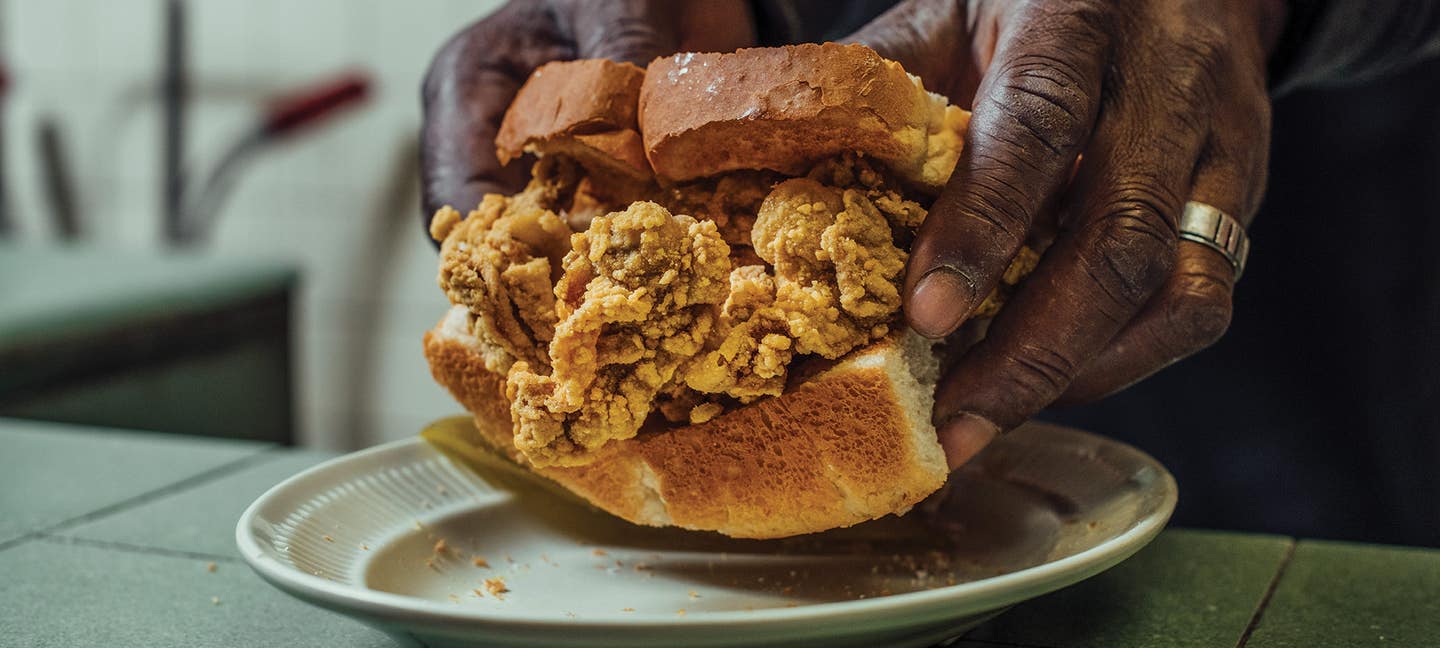
Celebrating 100 Years of Oysters at New Orleans Restaurant Casamento’s
A century after opening, Casamento’s still supplies oyster loaves, flawless fried seafood, and a feeling of permanence to Magazine Street
In the antique kitchen of his family's restaurant, C.J. Gerdes slips a handful of corn-floured oysters into one of the six blackened pots on the stove. The fat froths like sea foam. Two minutes later, he pulls them out, their crisp coats crinkled and golden. Sandwiched between thick, buttered slices of "pan bread"—Casamento's version of Texas toast—the oysters crackle as you bite into them, the crust crumbling down into the creamy centers.
I've been eating at Casamento's, a New Orleans institution that turns 100 this year, since I was a child, but, somehow, I've never asked what C.J. fries his seafood in.
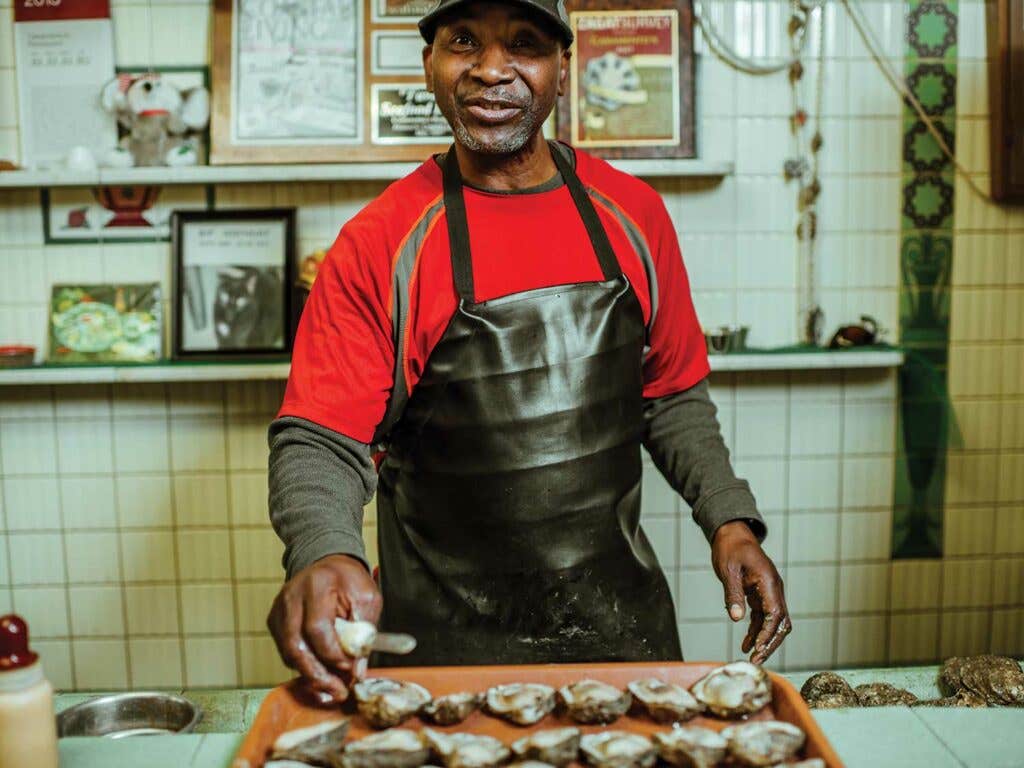
"It used to be we couldn't tell people, or they'd make a face," Linda Gerdes, C.J.'s wife, says with a laugh. "But then lard came back in style."
At the turn of the 20th century, C.J.'s grandfather, Joe Casamento, traveled to New Orleans from Ustica, a small Italian island four hours by boat from Sicily, and fell into food service. Moving from job to job across the city, he became convinced that he could build a better restaurant. Many places that served deep-fried seafood never bothered to change their grease, and some over-battered their oysters—drowning them in eggs and milk—before frying.
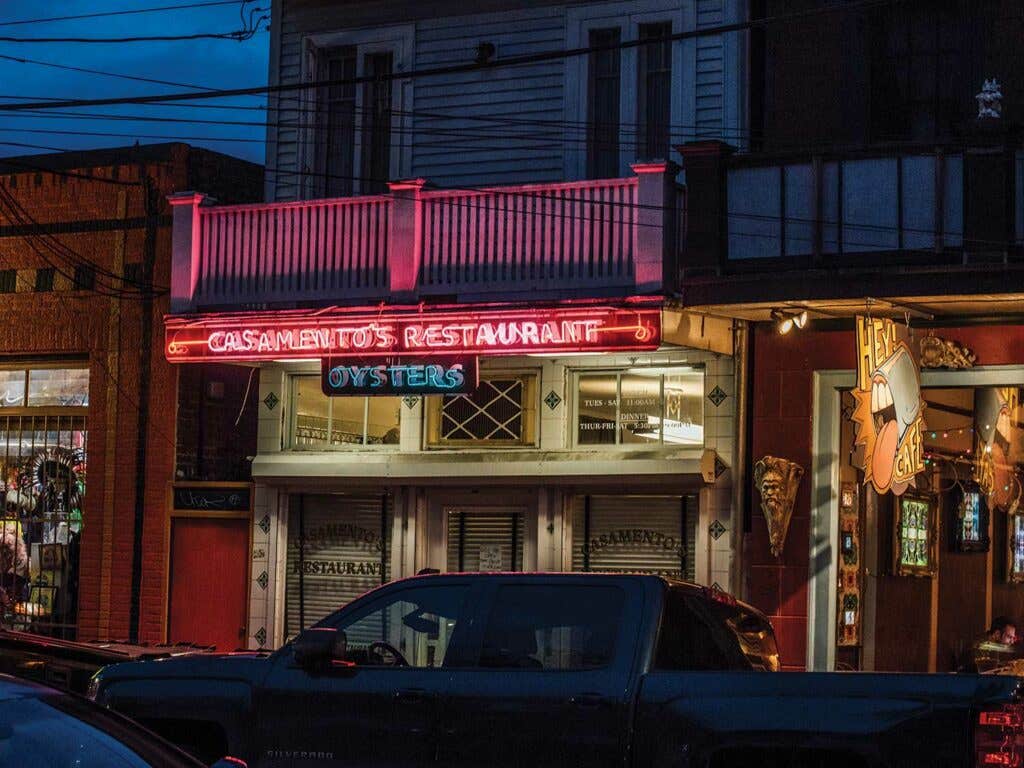
“He thought that was blasphemy,” C.J. tells me. “You’re gonna wash the brine off an oyster? No, Joe was an old-school Italian. Everything simple, so you can taste your food.”
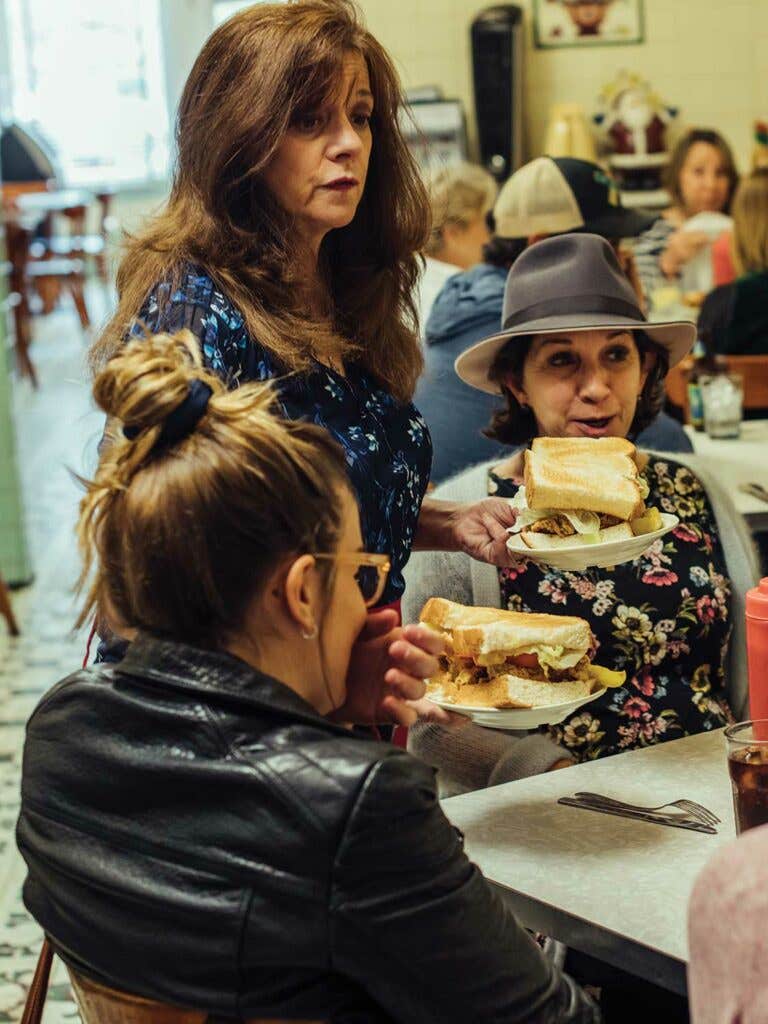
What Joe hated most, though, was how much food was wasted. New Orleans French bread—the long, soft loaves used for po'boys—would grow hard by the afternoon. The pillowy white sandwich bread from Sunbeam Bakery, however, only became more toothsome the longer it sat. Joe would have Sunbeam pull loaves off the conveyor belts before they hit the slicer and cut them into thick slabs in Casamento's kitchen. Brushed with butter, the bread turned golden brown under the broiler while the oysters fried.
Thus, Casamento’s oyster loaf came to be—a thing so simple, it seems silly. Just oysters, white bread, a dash of hot sauce, and a squeeze of lemon. You couldn’t even get lettuce and tomato on it while Joe was alive. It sits at the heart of an equally simple Creole Italian menu—oyster stew, spaghetti and meatballs, seafood gumbo—that has hardly changed since 1919. But that simplicity is what has kept this restaurant running for a century, through four generations of Joe’s family, and three generations of mine.
While we wait in line with the other regulars for a table, my daughter begs to be lifted onto my father's hip to watch the oyster shucking, just as I used to when I was a child. With a swift slip of his knife, Anthony O'Neal Rogers, who's been shucking oysters here for 22 years, pries one open, teetering the blade between the two halves of the shell. My daughter stares, searching for pearls. Arnold takes down a foggy plastic tub from the wall behind him, which is hung with T-shirts autographed by the likes of Nicole Kidman, Jimmy Carter, and Guy Fieri. He rattles its contents—about a dozen pearls the size of coarse salt—then plucks one with his fingers and places it in my daughter's palm.
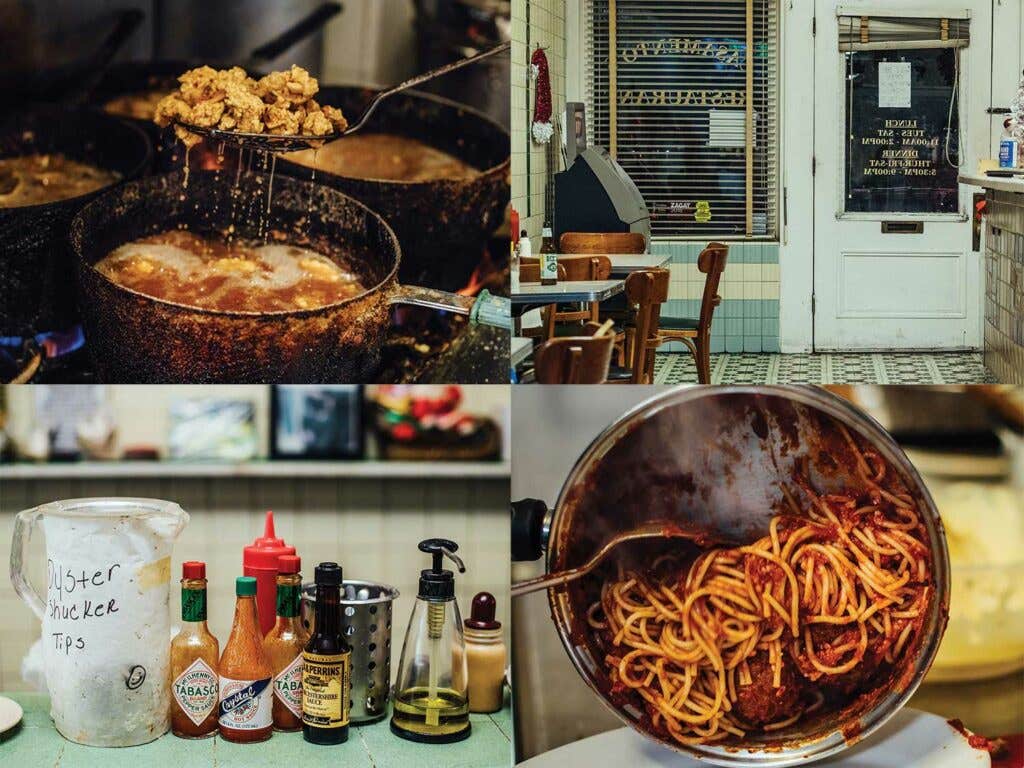
Anthony can shuck oysters at blazing speed when he’s put to it, but C.J.’s uncle, Joseph Casamento—named after his father—was even faster. C.J. tells of a time when he, Joseph, and Robert Washington, Anthony’s predecessor, raced to shuck a dozen. Joseph beat them both, opening all 12 in 45 seconds.
Casamento’s was one of the first restaurants my mother ever brought me to as a baby, and Joseph’s gloved hand cupping an ice-cold oyster is one of my earliest memories. In those days, C.J.’s mother, Mary Ann, served our dinners. Her picture now hangs on the wall behind the oyster bar, just below the autographed T-shirts. It’s 1919, and she is a little girl in loose curls, being held securely by her aproned father as she sits on the front counter of her family’s new restaurant. Her feet in their little black booties swing for the camera. The tile floor under Joe Casamento’s feet—long mosaic rows of red and green leaves—is still there, and only a little worn now, a century on.
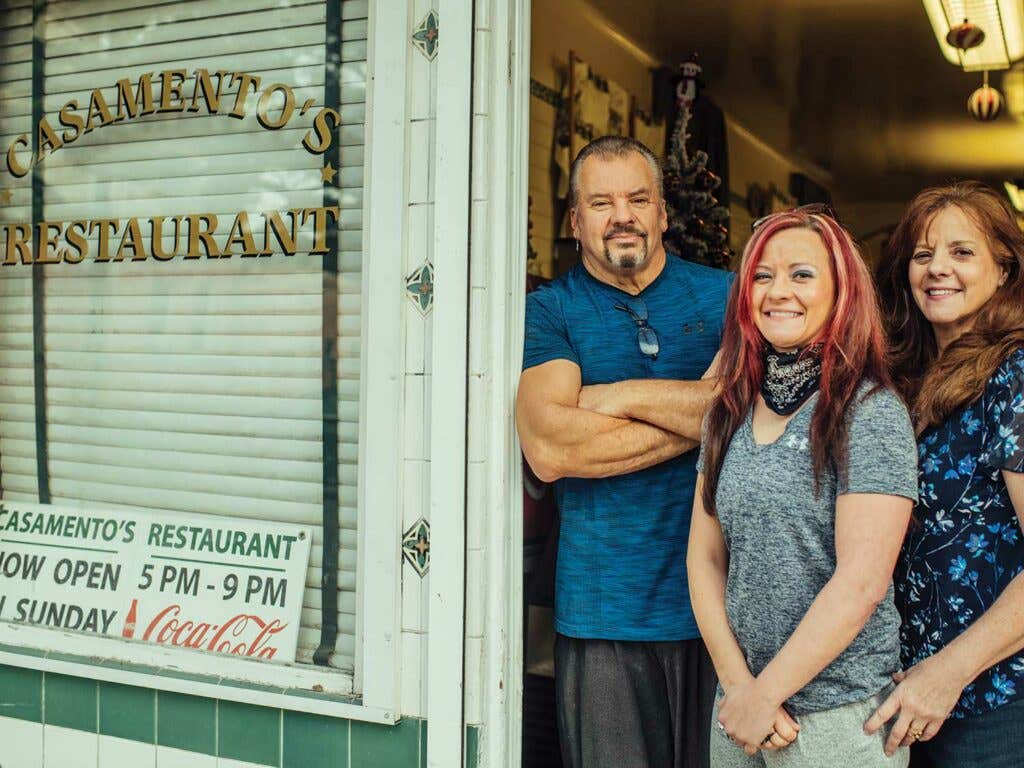
Thirty years after that photo was taken, in 1949, Joe decided to tile the walls too, lining his restaurant top to bottom, inside and out, with so much green and white tile that he had to source it from four different suppliers. Since tiling the restaurant would take nearly three months, Joe scheduled the job for summer, when oysters weren’t at their best and business was light. That was when Casamento’s started closing every summer, a scheduling quirk that adds to New Orleans’ seasonal rhythm. “At that time,” C.J. tells me, “we were open Tuesday through Sunday, double-shifts, and Joe enjoyed that time off, so we just kept doing it. It wasn’t until about five years ago that I talked to Linda and I said, ‘I’ve never been anywhere in the wintertime!’ ”
The tile also accounts for the fact that despite the restaurant’s daily frying, the place never smells of grease. Every May, when the restaurant closes for the season, the staff climbs up on ladders and scrubs every square inch clean.
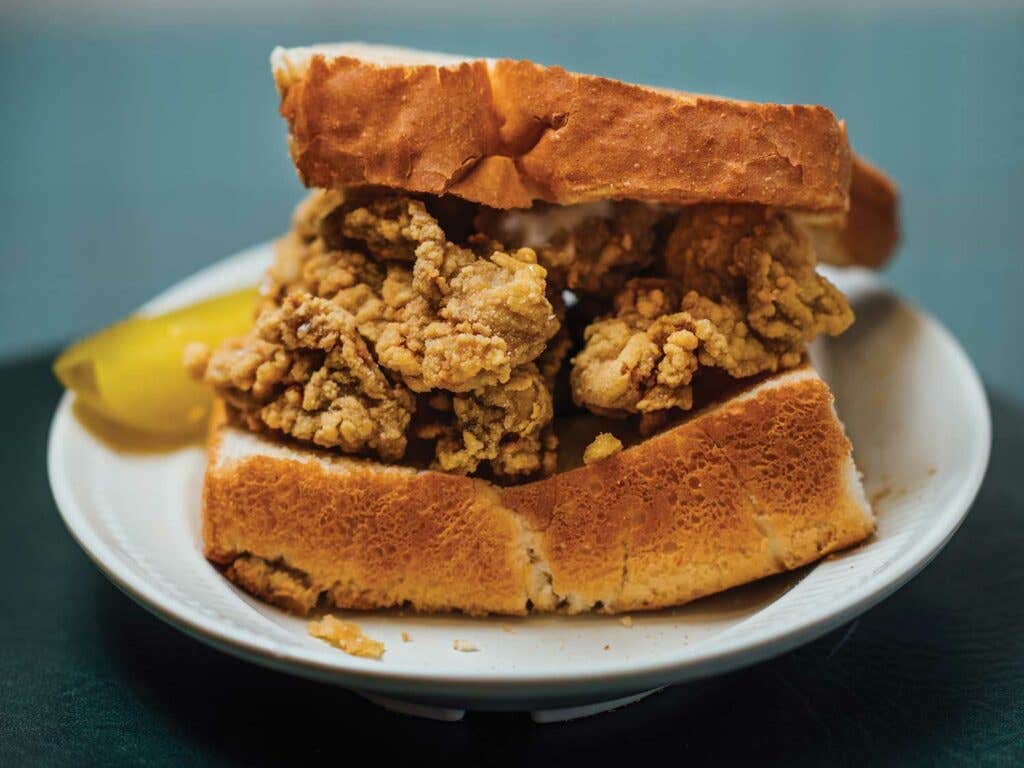
It was during Casamento’s annual summer vacation in 2005 that Hurricane Katrina hit New Orleans. As the storm approached the city, Joseph evacuated with a friend to Vicksburg, Mississippi, while C.J. and Linda took a scheduled vacation to Las Vegas.
“I had talked to Joseph that day,” C.J. says, “and he was in a panic, thinking we were going to lose the restaurant, thinking that thing is a Category 5, and everything he owned was upstairs.” Joseph had been born in the apartment above the restaurant, and after a tour in the Pacific during World War II, he never lived anywhere else. The experience was too much for him: “I got a call later that night saying that Joseph had died in the hotel room. He’d had a heart attack.”
Joseph’s was one of the many uncounted casualties of Katrina, his death caused by the stress of the evacuation and the levee breaks. C.J. wonders if Joseph would have had the strength to reopen the restaurant had he survived. The roof was damaged, and much of the equipment had to be replaced. But despite the expense, and having to drive back and forth between New Orleans and Baton Rouge to handle the transfer of the estate, C.J. lit his stove again on November 5, 2005, while half the city was still dark.
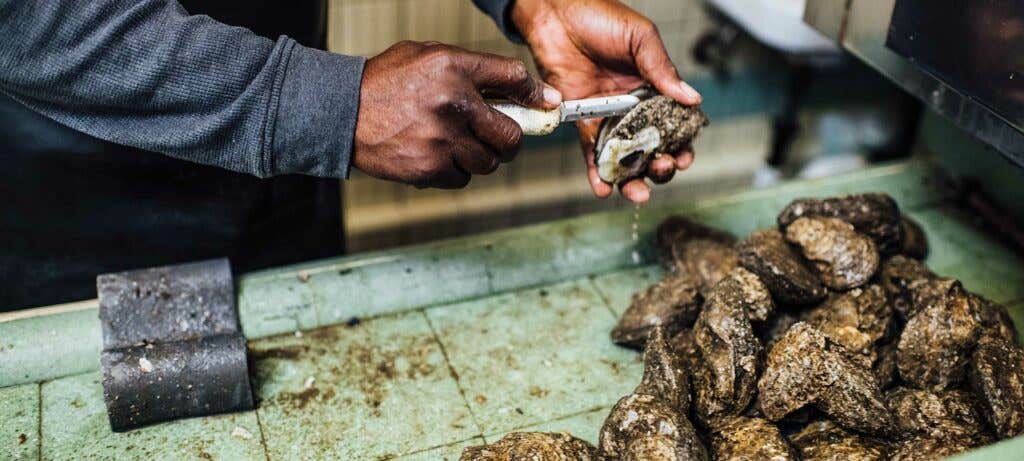
“The timing worked out perfectly,” C.J. says. The fisheries disrupted by the storm had finally reopened. “Oysters had come back in just the week before.”
Returning home that fall from New York, where I’d landed during the evacuation, the neon pink of the Casamento’s sign throbbed like a heartbeat over Magazine Street. I pushed through the familiar door, its Venetian blinds askew over the window, shaking with relief. If the oyster beds were back, if C.J. and Linda were back, if Casamento’s was back—maybe there was a chance we’d all return someday.
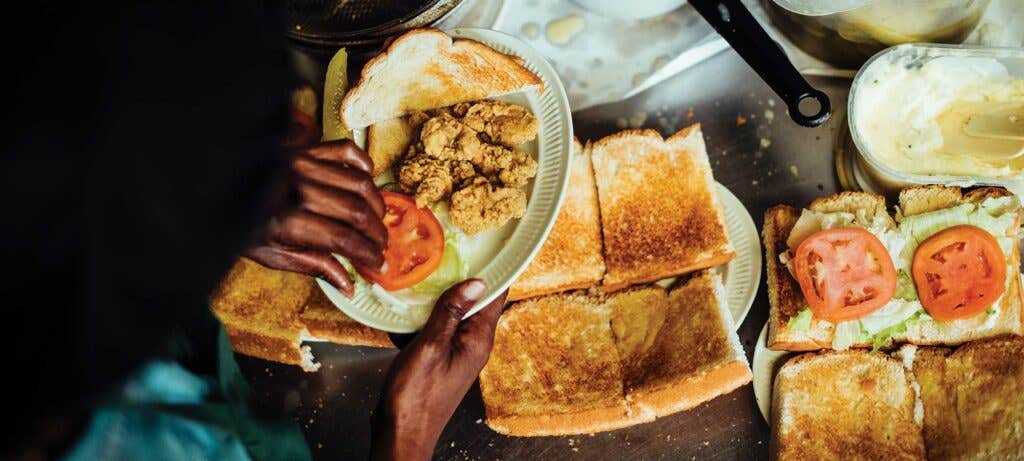
Linda greeted us, led us to our table, and took our regular order. The oyster loaf was medicine made of bread and salt and fry—the first meal I’d been able to finish since the storm made landfall. As I stepped up into the kitchen to hug C.J. and thank him, I was careful not to slip on the corn flour that once again dusted the tile.
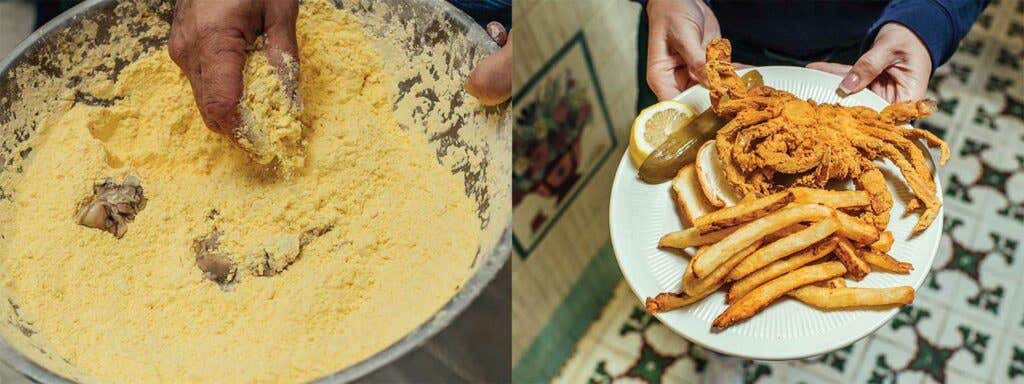
When my family sits down for dinner, we never get menus. Linda places beers on the table, little glasses clanging on the bottles’ necks like bells. “Dozen raws, dozen charbroils. French fries, extra crispy. Soft-shell crab for you?” Linda asks my mother, then rattles off the rest of our order, pointing her pen at each of us in turn. “Oyster loaf, shrimp loaf, oyster loaf, oyster loaf, oyster loaf dressed.” This last loaf is for my husband. He likes lettuce and tomato on his sandwich, and we mock him for it every time.
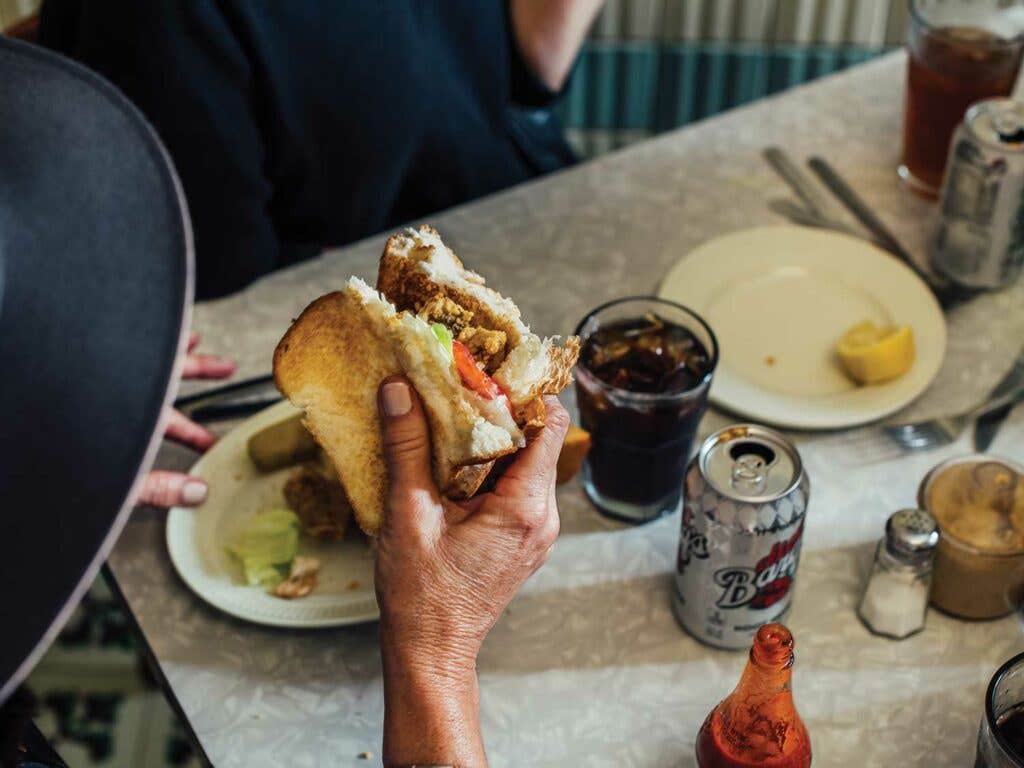
Our ways are as calcified as those of Casamento’s itself (which is saying something), and the oyster loaf satisfies as it always has. The restaurant is a place absolved from time—a crucible of community, where the walls wipe clean and lard never goes out of style.
Keep Reading
Continue to Next Story










